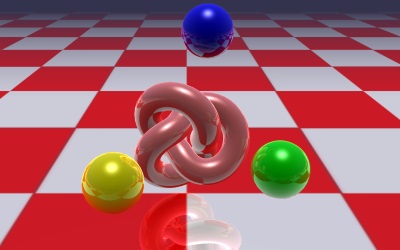How to use Reflection Probes

Reflection probes are used to dynamically generate cube maps that can the be used as reflection textures for instance.
Here is how to use them:
var probe = new BABYLON.ReflectionProbe("main", 512, scene);
probe.renderList.push(yellowSphere);
probe.renderList.push(greenSphere);
probe.renderList.push(blueSphere);
probe.renderList.push(mirror);
mainMaterial.reflectionTexture = probe.cubeTexture;
As you can see, you have to define which meshes will be rendered by the reflection probe.
You have to be cautious with reflection probes as they need to actually generate 6 textures per frame (One per face).
You can change the update rate (on every frame by default) with this code:
probe.refreshRate = BABYLON.RenderTargetTexture.REFRESHRATE_RENDER_ONCE;
// or
probe.refreshRate = BABYLON.RenderTargetTexture.REFRESHRATE_RENDER_ONEVERYFRAME;
// or
probe.refreshRate = BABYLON.RenderTargetTexture.REFRESHRATE_RENDER_ONEVERYTWOFRAMES;
// or
probe.refreshRate = 3;
To get the best possible rendering, you also need to move your probe at the center of the mesh which should use the generated cube map. (Internally the probe will generate a ghost camera at the specific position and will then render the faces from there). You have two options to achieve this:
probe.attachToMesh(root);
// or
probe.position = new BABYLON.Vector3(0, 1, 0);
If you want to try it, just click here -